Correctly positioning vertical radiators is crucial for maximising heating efficiency and comfort. Proper radiator placement can reduce energy bills bills by up to 10%. For expert radiator positioning advice, consult our specialists at Best Electric Radiators.
Considering your room layout and furniture placement is vital. Blocking radiators with furniture like a sofa against radiator can hinder performance.
At Best Electric Radiators, we offer the best radiator positioning advice. Our experts, with years of experience, provide guidance for positioning electric radiators, be they vertical, horizontal, or wall mounted. Trust us to help you find the perfect spots for your radiators.
Why Does Radiator Positioning Matter in a Household?
Proper radiator positioning is crucial for effective heat distribution and energy efficiency. When radiators are placed correctly, they can distribute heat evenly throughout a room, eliminating cold spots and ensuring a comfortable environment. Here’s why placement matters:
1. Prevents Heat Loss and Cold Spots: Proper radiator placement ensures warm air circulates freely rather than being trapped in one part of the room. If positioned near drafts, poorly insulated walls, or windows, heat can escape, creating cold spots and making it harder to maintain a comfortable temperature.
2. Improves Energy Efficiency: A strategically placed radiator delivers heat where it’s needed most, reducing the workload on your heating system. Poor placement—such as in a heat-absorbing area or against a cold exterior wall—forces the system to consume more energy to compensate, leading to higher utility bills.
3. Enhances Comfort Without Wasting Heat: A well-positioned radiator spreads warmth evenly across the room, preventing areas from feeling too hot or too cold. If positioned in an ineffective spot, you may need to turn up the thermostat unnecessarily, wasting energy without improving comfort.
4. Adapts to Room Layout and Functionality: The best radiator placement depends on the purpose and layout of each room. In living spaces, radiators should be positioned to ensure warmth reaches sitting areas. In bedrooms, they should be placed away from beds for comfortable sleeping conditions. In kitchens, they should not interfere with cooking areas but still provide sufficient warmth.
5. Optimizes Heat Retention: Placing radiators on interior walls rather than external ones helps retain heat within the home rather than losing it through poorly insulated structures. If an exterior wall is the only option, adding insulation behind the radiator can help prevent heat loss.

10 Best Practices for Radiator Positioning
Proper positioning of vertical electric radiators can greatly enhance heating efficiency and comfort in your home. Here are ten practical tips for optimal placement:
1. Keep It Away from Furniture
Placing a radiator directly behind large furniture pieces like a sofa, bed, cabinet, or shelving unit blocks heat from circulating freely, making your heating system work harder to maintain a comfortable temperature. The trapped heat warms up the furniture rather than the entire room, resulting in uneven heating, higher energy consumption, and wasted electricity.
What You Should Do:
• Maintain at least 20-30 cm of clearance between your radiator and furniture to allow heat to disperse evenly.
• If space is limited, consider using a vertical radiator, which takes up minimal floor space and maximizes heat output.
• In a bedroom, avoid placing a radiator too close to the bed, as direct heat exposure can cause discomfort while sleeping.
💡 Expert Tip:
If you can’t move the furniture, install a heat-reflective panel behind the radiator. This simple addition prevents heat from being absorbed by the furniture and redirects it into the room for better efficiency.
2. Avoid Full-Length Curtains or Drapes
Many radiators are positioned under windows to counteract drafts, but if covered by long, heavy curtains, they become significantly less effective. Curtains trap the heat between the radiator and the window, preventing it from spreading throughout the room.
What You Should Do:
• If your radiator is under a window, use shorter curtains that stop above the radiator or opt for blinds instead.
• Keep at least 15-20 cm of clearance between the radiator and any window coverings.
• If replacing curtains isn’t an option, consider pulling them back during heating hours to allow warm air to circulate freely.
💡 Expert Tip:
To reduce heat loss through windows, consider thermal curtains or draft excluders to keep warm air inside without obstructing the radiator.
3. Use Interior Walls for Better Heat Retention
Radiators mounted on exterior walls are more likely to lose heat, especially in older buildings with poor insulation. Interior walls, on the other hand, retain heat more effectively by preventing warmth from escaping through the structure.
What You Should Do:
• Choose an interior wall whenever possible to maximize heat retention and reduce energy consumption.
• If an exterior wall is the only option, install reflective insulation behind the radiator to minimize heat loss.
• In poorly insulated homes, consider additional wall insulation to prevent warm air from escaping.
💡 Expert Tip:
If you must install your radiator on an exterior wall, position it close to the center of the room for better heat distribution.
4. Consider the Function of Each Room
Where you place your radiator should depend on how the room is used. A poorly positioned radiator in a living room, bedroom, kitchen, or bathroom can lead to wasted energy and discomfort.
What You Should Do:
• Living Room: Place the radiator in an open space to distribute warmth evenly across seating areas. Avoid placing it behind a sofa or TV unit.
• Bedroom: Position the radiator away from the bed to prevent overheating while sleeping but close enough to maintain a comfortable warmth level.
• Kitchen: Keep the radiator away from cooking areas, fridges, or ovens, as excess heat can interfere with the thermostat and cause inefficient heating.
• Bathroom: A towel radiator near the shower or bathtub ensures warm towels and prevents cold drafts when stepping out of the bath.
💡 Expert Tip:
If wall space is limited, a vertical radiator is a great solution as it delivers powerful heating while taking up minimal room.
5. Don’t Let Existing Pipework or Wiring Dictate Placement
Traditional radiators rely on plumbing, limiting where they can be placed. Electric radiators don’t have this restriction, allowing you to choose the best location rather than being confined by existing pipework or wiring.
What You Should Do:
• Ignore outdated radiator placements if they don’t provide effective heat distribution.
• If needed, adjust the electrical wiring to place your radiator in a more energy-efficient position.
💡 Expert Tip:
Before committing to a location, test different spots with a portable heater to see which area distributes heat most effectively.
6. Choose a Radiator That Complements Your Home’s Aesthetic
A radiator isn’t just a heating appliance—it’s also part of your home’s interior design. The right radiator blends into your space while still providing optimal heating performance.
What You Should Do:
• Select a radiator finish and color that complements your room’s style (e.g., white, black, or anthracite).
• Choose between modern slimline radiators for contemporary interiors or classic panel designs for a traditional look.
💡 Expert Tip:
Consider a wall-mounted vertical radiator for modern, space-saving heating in minimalist or compact spaces.
7. Take Advantage of Smart Controls
Smart thermostats and app-controlled heating systems help optimize heat output, ensuring warmth is delivered only when needed.
What You Should Do:
• Invest in WiFi-enabled radiators that allow you to adjust temperatures remotely.
• Use programmable heating schedules to warm up rooms before you wake up or return home.
💡 Expert Tip:
Pairing your electric radiator with a smart plug lets you control heating with voice assistants like Alexa or Google Home.
8. Keep the Area Around Your Radiator Clutter-Free
Obstructing a radiator with furniture, bookshelves, or decorations restricts airflow and prevents even heat distribution.
What You Should Do:
• Keep at least 30 cm of clear space around your radiator for optimal efficiency.
• Avoid using radiators as a drying rack for clothes, as this blocks heat and increases humidity.
💡 Expert Tip:
If you need a drying solution, consider a heated towel rail instead of draping clothes over radiators.
9. Improve Heat Efficiency with Reflective Insulation
Walls, especially exterior ones, absorb heat from radiators, reducing efficiency. Adding reflective insulation behind the radiator helps direct warmth into the room instead of losing it through the walls.
What You Should Do:
• Apply heat-reflective panels behind your radiator to maximize energy efficiency.
• If possible, upgrade insulation to further reduce heat loss.
💡 Expert Tip:
For best results, use foil-backed insulation boards, which are thin, effective, and easy to install.
10. Consider Different Radiator Types for Each Room
Different rooms have different heating needs, and choosing the right radiator size and style enhances both comfort and efficiency.
What You Should Do:
• For small rooms: Use compact wall-mounted radiators.
• For large spaces: Opt for high-output electric radiators with larger surface areas.
• For bathrooms: Install heated towel rails that provide warmth while drying towels.
💡 Expert Tip:
Check the wattage of your radiator to ensure it is sized correctly for the room—100W per square meter is a good starting point for well-insulated spaces.
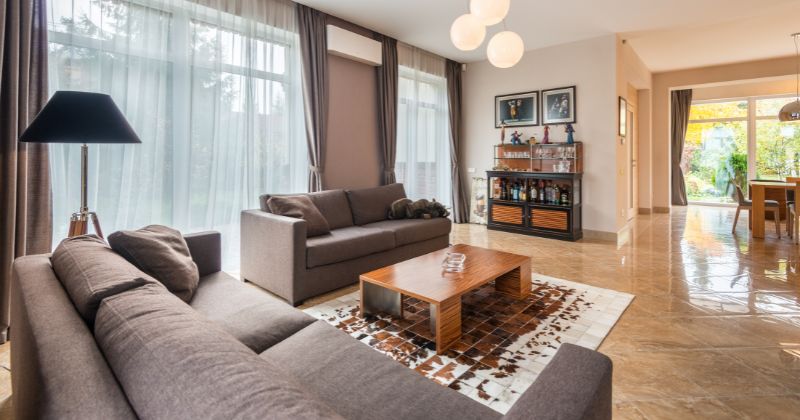
Best Optimal Positioning in Different Rooms For Your Homes
Choosing the right spot for your vertical radiators in each room can significantly enhance their efficiency. The layout and use of each room play a crucial role in deciding where to place a radiator. Let’s explore the best positions for different rooms to maximise comfort and functionality.
Living Room
In the living room, maintaining a comfortable and energy-efficient heating setup is key, as this space is often the largest and most used area in the home.
• Place the radiator on an open wall for balanced heat flow. Avoid positioning it behind large furniture, such as sofas or bookshelves, as this can obstruct heat circulation and create cold spots.
• For open-plan living rooms, consider multiple radiators. A single unit may not provide enough warmth for larger spaces, so positioning two radiators at opposite ends of the room can help distribute heat evenly.
• Avoid placing radiators directly near entertainment units or electrical devices. While electric radiators are safe for home use, excessive heat near electronics can impact performance over time.
Kitchen
The kitchen naturally generates ambient heat from cooking appliances, so radiator placement should complement this warmth without causing overheating.
• Install radiators away from high-heat areas. Keep them at a distance from ovens, stoves, or refrigerators to prevent heat interference and energy waste.
• Vertical radiators work well in compact kitchens. They save wall space and provide sufficient heat without interfering with storage or movement.
• Place the radiator near dining areas for added comfort. This ensures a pleasant dining experience, especially in open-plan kitchens where heat may disperse quickly.
Bedroom
Bedrooms require gentle, consistent warmth, particularly during colder months. Radiator placement should ensure a comfortable sleeping environment without excessive heat buildup.
• Install radiators on an interior wall to maintain stable temperatures. Exterior walls can lead to heat loss, requiring the system to work harder to compensate.
• Keep the radiator away from the bed to avoid discomfort. Placing it too close can lead to overheating, affecting sleep quality. Instead, position it near the foot of the bed or on a side wall for better heat distribution.
• Avoid covering radiators with long curtains. Curtains that extend over the radiator can trap heat against the wall instead of allowing it to spread throughout the room.
Bathroom
Bathrooms need effective heating that prevents dampness while offering warmth, making wall-mounted or towel rail radiators an excellent choice.
• Position near towel racks for efficient drying. This ensures warm, dry towels while also keeping the space comfortable.
• Consider vertical towel radiators to save space. Compact bathrooms benefit from wall-mounted designs that free up floor space without compromising heat output.
• Avoid placing radiators too close to water sources. While modern electric radiators are IP-rated for bathroom use, keeping a safe distance from showers, sinks, and bathtubs is recommended for practicality and longevity.
| Room | Best Radiator Placement | Key Benefits |
| Living Room | Along an open wall, away from furniture and curtains | Ensures even heat distribution, prevents heat blockage from furniture, enhances comfort |
| Bedroom | On an interior wall, away from the bed and windows | Retains warmth better, prevents direct heat exposure while sleeping, improves energy efficiency |
| Bathroom | Near towel rails or an open wall space away from water sources | Keeps towels warm and dry, prevents dampness, optimizes space for compact layouts |
| Kitchen | On an open wall, away from appliances and cooking areas | Avoids heat interference from stoves or ovens, ensures effective heat circulation, prevents overheating in a busy space |
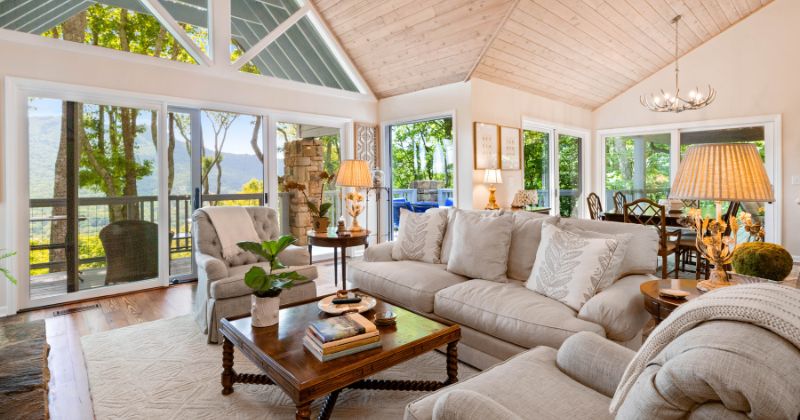
Special Considerations for Positioning Electric Radiators
Certain factors can affect the performance and efficiency of vertical radiators. The position of a radiator can influence heat distribution, aesthetics, and overall comfort in your home. It’s important to consider traditional and modern home designs and specific room features.
Under Windows
In traditional homes, radiators are often placed under windows to combat drafts. In modern homes with better insulation, this isn’t as necessary. However, balancing efficiency and aesthetics remains key. Short curtains or blinds work best here.
Near Doors
Avoid placing radiators directly near doors to prevent heat loss from drafts. Positioning radiators on walls away from doorways helps maintain even heat distribution throughout the room.
On Interior vs. Exterior Walls
Placing radiators on interior walls is more efficient because it reduces heat loss. Exterior walls require additional insulation. Each option has benefits and drawbacks, but interior walls generally perform better.
| Radiator Type | Best Placement | Key Benefits |
| Horizontal Radiators | Below windows, along longer walls | Distributes heat evenly, suits standard room layouts, blends seamlessly with traditional interiors |
| Vertical Radiators | Narrow spaces, beside doors, alcoves | Saves wall space, ideal for modern and compact rooms, enhances contemporary aesthetics |
| Wall-Mounted Radiators | Any open wall space, bathrooms, kitchens | Space-saving, flexible positioning, prevents floor obstruction, suitable for various room sizes |
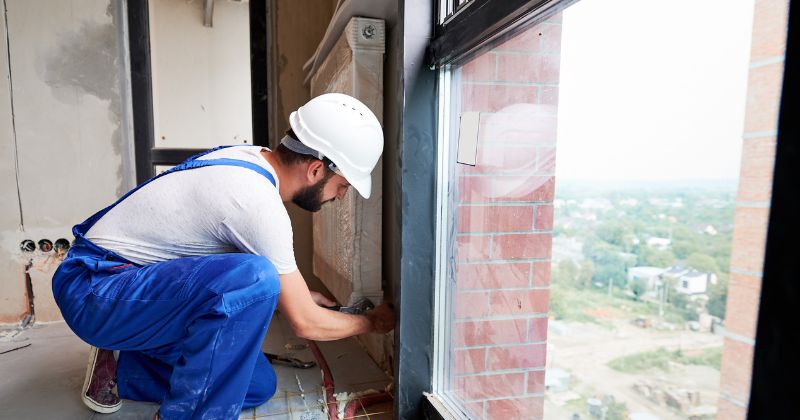
7 Common Mistakes that You Need to Avoid for Radiator Positioning Advice
Avoiding common mistakes in radiator positioning can significantly improve your home’s heating efficiency and comfort. Incorrect placement can lead to poor heat distribution and higher energy costs. Here are the common pitfalls to watch out for:
1. Placing Radiators Behind Furniture
Never place a couch in front of radiator. Furniture blocks heat flow, reducing the radiator’s effectiveness. Keep the area clear for better heat circulation.
2. Using Full-Length Curtains Over Radiators
Should curtains cover radiator? No, full-length curtains trap heat and prevent it from spreading into the room. Opt for shorter curtains or blinds instead.
3. Ignoring Existing Pipework Constraints
While modern homes offer flexibility, completely ignoring existing pipework can complicate installation. Plan around current pipework when possible to save time and costs.
4. Placing Radiators on Exterior Walls Unnecessarily
Putting radiators on exterior walls can lead to heat loss. Whenever possible, use interior walls to retain more heat within the room.
5. Installing Radiators Near Drafts or Poorly Insulated Areas
Avoid placing radiators near windows, doors, or poorly insulated walls. Drafts can carry heat away, making your system work harder to maintain temperature.
6. Overlooking the Importance of Proper Height for Installation
The height at which you install your radiator affects heat distribution. Typically, radiators should be placed 4-6 inches above the floor for optimal performance.
7. Neglecting Regular Maintenance and Bleeding of Radiators
Regular maintenance, including bleeding radiators, is crucial. Neglecting this can lead to air pockets that reduce efficiency and heating performance.

Get Expert Advice and Personalised Strategies from Best Electric Radiators
Follow our radiator positioning advice to maximise heating efficiency. Correct placement ensures even heat distribution, lowers energy costs, and enhances comfort. Vertical radiators offer flexible placement options suitable for any room in your home.
At Best Electric Radiators, we pride ourselves on providing the best radiator positioning advice to help you optimise your home heating. Our team of experts is ready to assist you with personalised strategies tailored to your household needs.
Don’t hesitate to contact us for more information. Whether you’re unsure where to put radiators or need detailed advice on installing a vertical radiator in your living room, kitchen, bedroom, or bathroom, we’re here to help.
Contact us today to improve your home’s heating efficiency and comfort.
FAQS
What Is the Best Radiator Positioning Advice for Modern Homes?
To maximise efficiency and comfort, place radiators on interior walls, avoid blocking them with furniture, and stay away from drafts.
Can You Put a Bed in Front of a Radiator?
No, placing a bed before a radiator blocks heat distribution and can be a safety hazard.
Is It Safe To Place a Couch in Front of a Radiator?
No, a couch before a radiator obstructs heat flow and reduces efficiency.
Where To Put Radiators in a Living Room?
Place radiators on open walls, away from furniture, for even heat distribution.
Should Curtains Cover a Radiator?
No, curtains should not cover radiators as they trap heat and reduce efficiency.
What is the Ideal Height For Placing a Radiator from the Floor?
Radiators should be placed 4-6 inches above the floor for optimal heat distribution.
Can a Vertical Radiator Be Placed in the Kitchen?
Yes, place it on an open wall, away from cabinets, to ensure effective heating.
Where To Place a Radiator in a Bedroom for Optimal Comfort?
Place it on an interior wall, away from the bed and windows, to retain heat.
Is It Effective To Place Radiators on Exterior Walls?
It can be less effective due to heat loss; interior walls are generally better.
Where Is the Best Spot for a Vertical Radiator in the Living Room?
On open walls, avoid any furniture that may block the heat flow.
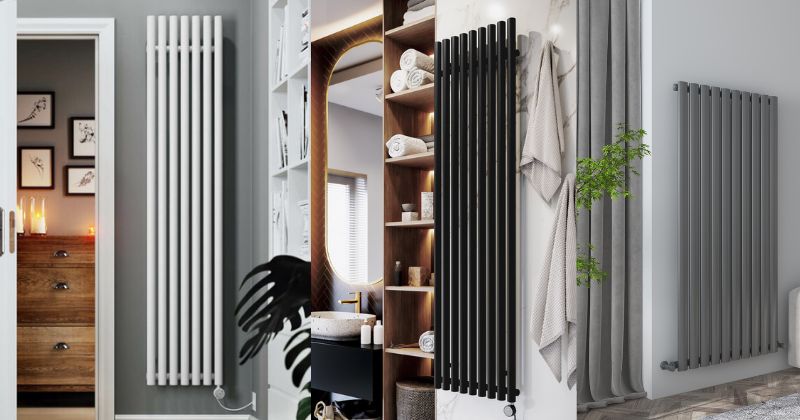


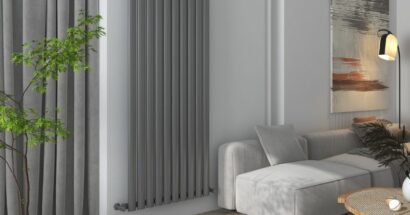


Leave a Reply